EVGA GeForce GTX 660 SC (SuperClocked) 2GB Video Card Review
Peter Kapas
September 13, 2012
Hardware, NVIDIA, Reviews & Articles, Video Cards/Graphics Cards
3 Comments
Nvidia’s latest mid-range budget Kepler video card might be a new great opportunity for gamers running older DX10 based cards to upgrade to a very reasonably priced DX11 GPU. EVGA’s latest GeForce GTX 660 SC video card comes factory overclocked with even more performance down its sleeves, while also maintaining a very low TDP. Check out what the new Nvidia GeForce GTX 660 can do compared to its red competition.
A renaissance just started in the gaming industry, “An explosion of innovation and content that’s occurring in multiple aspects of PC gaming”, Nvidia claimed in their latest press conference. Game developers are highly relying on latest technologies, including DX11 on almost every single new game currently in development, including World of Warcraft: Mist of Pandaria, Call of Duty Black Ops 2, and Assassin’s Creed III. These big titles will push the gaming market to another level, with more visual beauty for the eyes, along with a better gaming experience. Some of the new free to play games will also take advantage of DirectX 11 and PhysX technology developed by Nvidia, including Hawken, Planetside 2, and Mechwarrior Online. But recent polls from Steam hardware survey has shown that 53% of the gamers are still relying on DirectX 10 hardware in their everyday gaming. These older GPUs simply won’t provide enough performance for users to enjoy these latest titles even under DX10 settings at higher High-Definition resolutions. Today Nvidia is launching their latest mid-range and budget ‘Kepler’ GK106 GPU, the GeForce GTX 660. The Nvidia GeForce GTX 660 comes in roughly around $230, in local retail stores and e-tailers with the same features that Nvidia’s flagship GeForce GTX 680 graphics card came with: Nvidia’s SMX architecture and GPU Boost. The Nvidia GeForce GTX 660 is designed to provide the performance needed for high-resolution (1920×1080) gaming in the latest DirectX 11 compatible games.
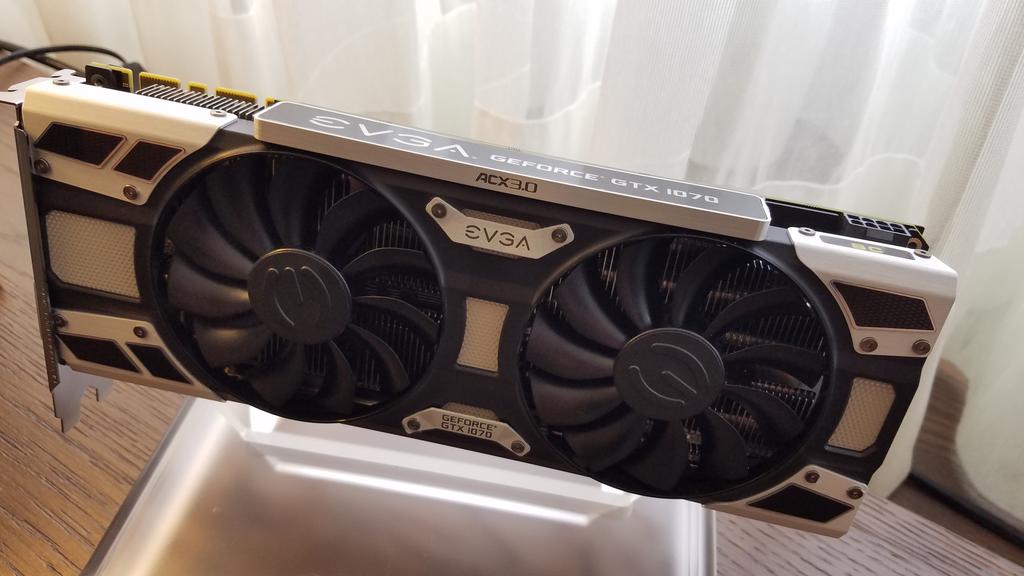
Today we are taking a look at EVGA’s factory overclocked version of the GTX 660, the EVGA GeForce GTX 660 SuperClocked (SC) 2GB video card. Unlike the reference GeForce GTX 660, which comes with a 980 MHz Core Clock speed, and a boost clock of 1033 MHz, the EVGA GTX 660 SC is factory overclocked to 1046 MHz Core Clock speed, and 1111 MHz with Boost Clock settings. However the reference card and the EVGA factory overclocked card does come with the same amount of CUDA Cores (960), 5 SMX Units and 24 ROPs. The Memory Bus Width has been downgraded from a 256-bit interface from the previous generation Fermi GTX 560 to a 192-bit interface, however, this does not mean that the new Kepler GTX 660 will perform slower in overall memory bandwidth than the GTX 560. As a matter a fact, with the current 192-bit memory interface, Nvidia is able to provide a much larger frame buffer of 2GB (VRAM) for current DX11 games, that might require the extra frame buffer to load valuable information for smooth gameplay.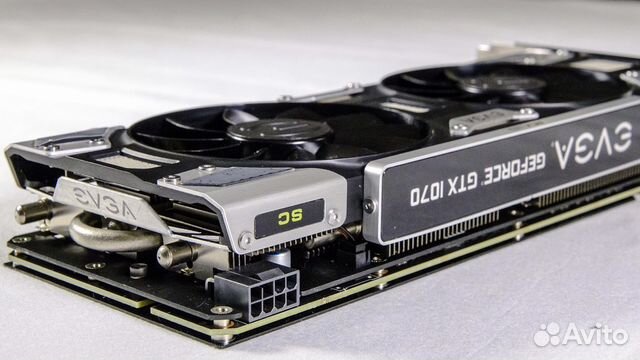 We’ll take a closer look at the details in this review.
We’ll take a closer look at the details in this review.
Features & Specifications
Here we have the specification breakdown of the EVGA GTX 660 and the reference GTX 660 graphics card. We have also included the specifications for the last two generation cards as well. According to Nvidia, gamers coming from the GTX 460 should see roughly about 2.5X the performance increase, while users coming from the older DX10 generation cards, like the 9800GT, should see a 4.3X the performance increase. If you are unfamiliar with the new Kepler architecture, we highly recommend reading over our main GTX 680 launch article HERE.
| Specifications | EVGA GTX 660 SuperClocked | Nvidia GTX 660 (Reference) |
Nvidia GTX 560 (Reference) |
Nvidia GTX 460 (Reference) |
| CUDA Cores (Stream Processors) |
960 | 960 | 336 | 336 |
| Bus Interface | PCI-Express 3.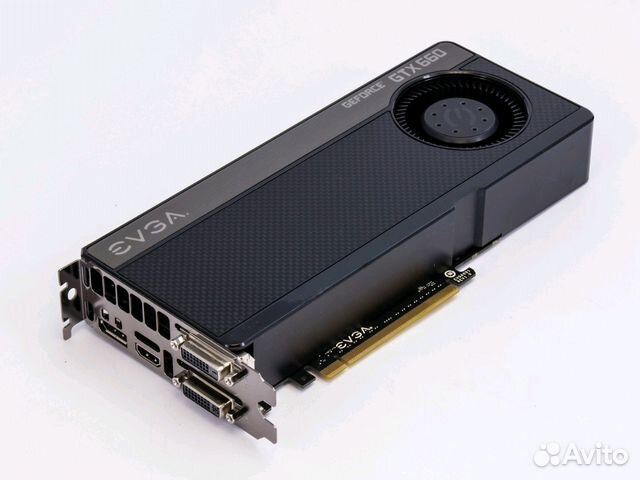 0 0 |
PCI-Express 3.0 | PCI-Express 2.0 | PCI-Express 2.0 |
| Texture Units |
80 | 80 | 56 | 56 |
| ROPs |
24 | 24 | 32 | 32 |
| SMXs |
5 | 5 | N/A | N/A |
| Core Clock | 1046 MHz | 980 MHz | 810 MHz | 675 MHz |
| Boost Clock |
1111 MHz | 1033 MHz | N/A | N/A |
| Memory Clock |
6008 MHz Effective | 6008 MHz Effective | 4004 MHz Effective | 3600 MHz Effective |
| L2 Cache Size |
384 KB | 384 KB | – | – |
| Memory Bus Width |
192 Bit | 192 Bit | 256 Bit | 256 Bit |
| Total Memory Bandwidth |
144. 19 GB/s 19 GB/s |
144.19 GB/s | 128 GB/s | 115.2 GB/s |
| Texture Fill Rate (Bilinear) |
83.68 GT/s | 78.4 GT/s | 45.4 GT/s | 37.8 GT/s |
| VRAM | 2GB (GDDR5) | 2GB (GDDR5) | 1GB (GDDR5) | 1GB (GDDR5) |
| SLI Ready | 2-Way | 2-Way | 2-Way | 2-Way |
| TDP | 140W | 140W | 150W | 160W |
| Recommended Power Supply | 450W+ | 450W+ | 450W+ | 450W+ |
| Power connectors | 6-Pin | 6-Pin | 2x 6-Pin | 2x 6-Pin |
| Outputs | 2x DL-DVI, HDMI, DisplayPort 1. 2 2 |
2x DL-DVI, HDMI, DisplayPort 1.2 | 2x DL-DVI, Mini HDMI | 2x DL-DVI, Mini HDMI |
| Manufacturing Process |
TSMC 28nm | TSMC 28nm | TSMC 40nm | TSMC 40nm |
| Thermal Threshold | 98C | 98C | 99C | 104C |
| Launch Price | $229.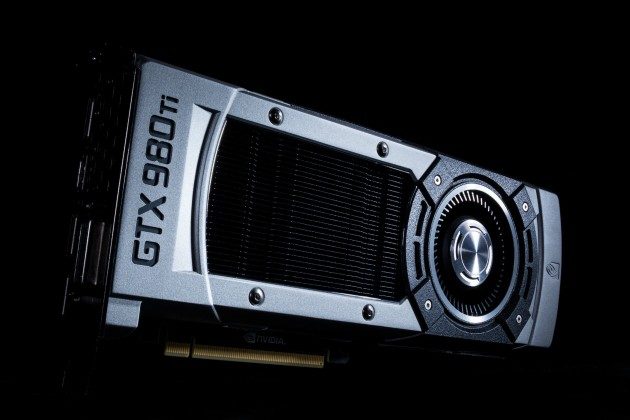 99 99 |
$239.99 (MSRP) | $199 (MSRP) | $229 (MSRP) |
Click Images to Enlarge
Let’s take a look at what we get with the EVGA GTX 660 SC 2GB video card. The EVGA GTX 660 SC comes in a standard thin cardboard box. It comes shrink wrapped in transparent plastic wrap, to protect the visually simple but striking design on the box. The front of the box reveals that this graphics card is factory overclocked and that it comes with 2GB of GDDR5 video memory. The EVGA GTX 660 SC comes with the latest PCI-Express 3.0 interface, and supports all of Nvidia’s latest technologies, including Nvidia 3D Vision, and Surround. The back of the box goes into more detail about the specification and features of the card, along with the output display connectors available on this particular graphics card. We’ll go into more detail about the display outputs below.
We’ll go into more detail about the display outputs below.
Click Images to Enlarge
Taking out the video card from the box can only be done from one side, unless the box is ripped apart partially to allow access to the video card. In the image we have opened up the box on the opposite side. We can see that we are unable to remove the video card from the box due to the card board in the middle of the box. Opening the box from the other side makes it much easier to remove all the accessories and the video card itself.
The EVGA GTX 660 SC 2GB video card comes packaged in a bubble wrap cover, and also in an additional anti-static bag to prevent any damage being done to the card. The video card is also covered with a thin layer of transparent plastic sheet to prevent scratches to the chassis of the card. This keeps the card nice and clean looking without finger prints till you put it in your system. Other accessories that are included in the package include a DVI to VGA adapter, a 2 x Molex to a single 6-pin PCI-E power cable, user’s manual and installation guide, along with warning fliers, EVGA Warranty information, DVD including the graphics card drivers, and an EVGA metal badge that can be put on your chassis.
Click Images to Enlarge
When we took the card out of it’s bubble warp, and anti-static bag, we have right away noticed the quality improvement of the chassis compared to previous reference cooler designs, like on the GTX 670. It could be that we are already used to the feel of the lower-quality chassis that we’ve seen on some of the Kepler cards, but nonetheless, the EVGA GTX 660 SC felt somewhat higher quality. Looking at the card, the EVGA GTX 660 SC has a simple but beautiful carbon fiber and aluminum like cover, however, the cover is made out of plastic, and the card comes in at a length of 9.5in (241mm) a height of 4.367in (111.15mm) and a width of two PCI slots. The card weights roughly 3 pounds.
Click Images to Enlarge
The back of the card comes with the same general design as the GeForce GTX 670, and the GTX 660 Ti. The actual PCB is much shorter, but the cooler’s fan is located right next to the PCB to be able not only cool down the GPU, but also the surrounding components on the PCB.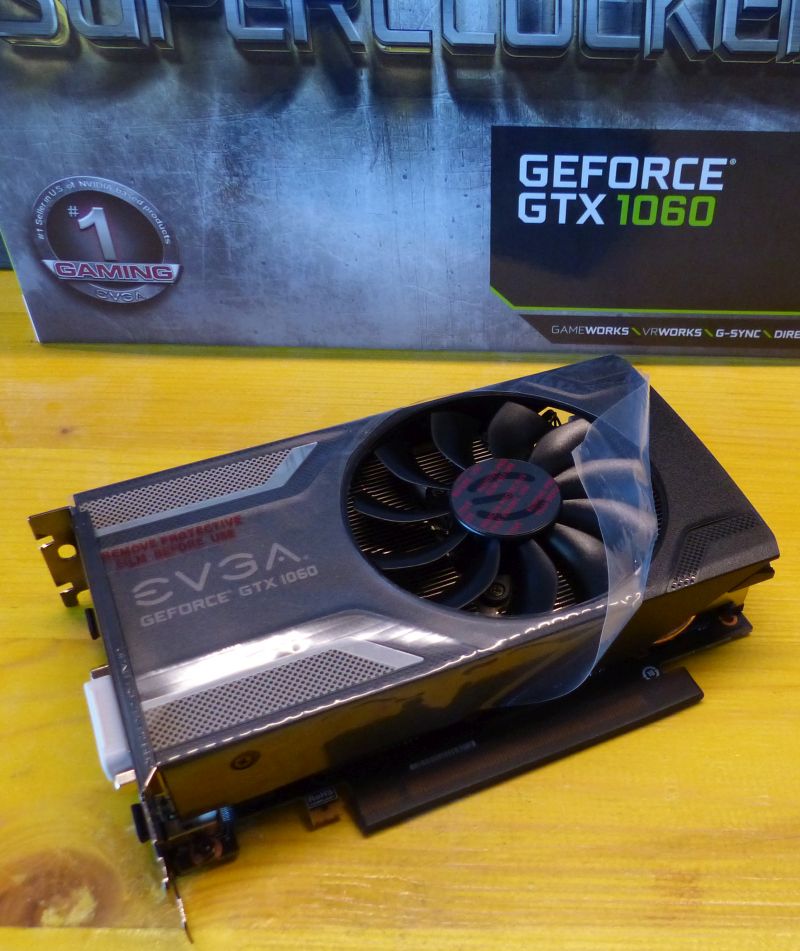 This particular cooler uses a push fan design, which pushes the cool air through the card, and exhaust the hot air at the back of the chassis. While this type of cooling is more efficient at keeping lower system temperatures, a double fan design which relies on cooling the card with the available re-circulated air inside the chassis usually performs better on the GPU side, but can also heat up the system by several degrees.
This particular cooler uses a push fan design, which pushes the cool air through the card, and exhaust the hot air at the back of the chassis. While this type of cooling is more efficient at keeping lower system temperatures, a double fan design which relies on cooling the card with the available re-circulated air inside the chassis usually performs better on the GPU side, but can also heat up the system by several degrees.
Towards the top left corner of the EVGA GTX 660 SC video card, we can see the SLI connector. The EVGA GTX 660 SC is capable of up to 2-Way SLI. Getting two GTX 660s would not be a bad option for a 2-Way SLI system, considering that the card comes with a 2GB GDDR5 memory. This means that games even on HD resolutions with high AA will have a very slow chance of actually using up all of the 2GB of VRAM. Do keep in mind that this depends on the type of game you play, and some games that can be heavily modded, like The Elder Scrolls V: Skyrim, can easily exceed 2GB of VRAM with the extra-high resolution texture packs that the Nexus community has come up with. In this case, EVGA also sells another GeForce GTX 660 model, which comes with 3GBs of GDDR5 memory. That card however costs about $40 more at $269.99.
In this case, EVGA also sells another GeForce GTX 660 model, which comes with 3GBs of GDDR5 memory. That card however costs about $40 more at $269.99.
Click Images to Enlarge
The rear of the card has 4 display output connectors. Starting from the right going left, we can see two Dual-Link DVI ports. Do keep in mind that the top port is DVI-D while the bottom port is DVI-I. Next we can also see a Mini-HDMI port, and a DisplayPort.
Click Images to Enlarge
Finally, right by the fan of the video card, we can see a single 6-pin PCI-E power connector. This card is designed to run at a maximum of 150W TDP, which is 75W of power from the PCI-E slot and 75W from the 6-pin PCI-E power connector. Technically the card will use roughly around 120-130W TDP during normal use, but that extra headroom is provided for overclocking. The EVGA Precision X overclocking tool allows gamers to easily increase the power target up to 110%. This should give a bit more headroom for the GPU Boost and Core Clock overclocking.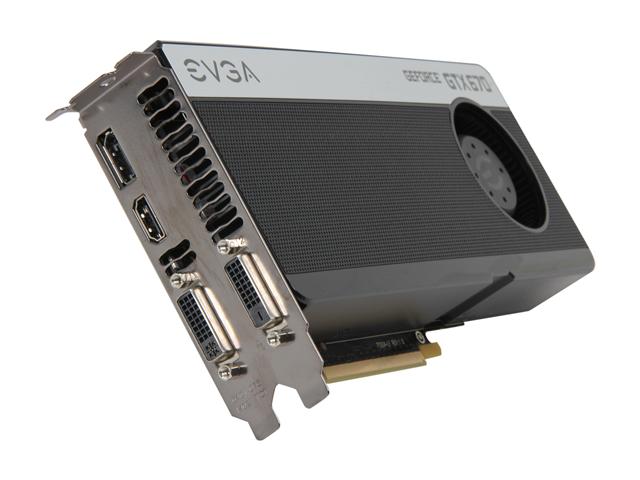
The OS we use is Windows 8 Pro 64bit (Retail) with all patches and updates applied. We also use the latest drivers available for the motherboard and any devices attached to the computer. We do not disable background tasks or tweak the OS or system in any way. We turn off drive indexing and daily defragging. We also turn off Prefetch and Superfetch. This is not an attempt to produce bigger benchmark numbers. Drive indexing and defragging can interfere with testing and produce confusing numbers. If a test were to be run while a drive was being indexed or defragged, and then the same test was later run when these processes were off, the two results would be contradictory and erroneous. As we cannot control when defragging and indexing occur precisely enough to guarantee that they won’t interfere with testing, we opt to disable the features entirely.
Prefetch tries to predict what users will load the next time they boot the machine by caching the relevant files and storing them for later use.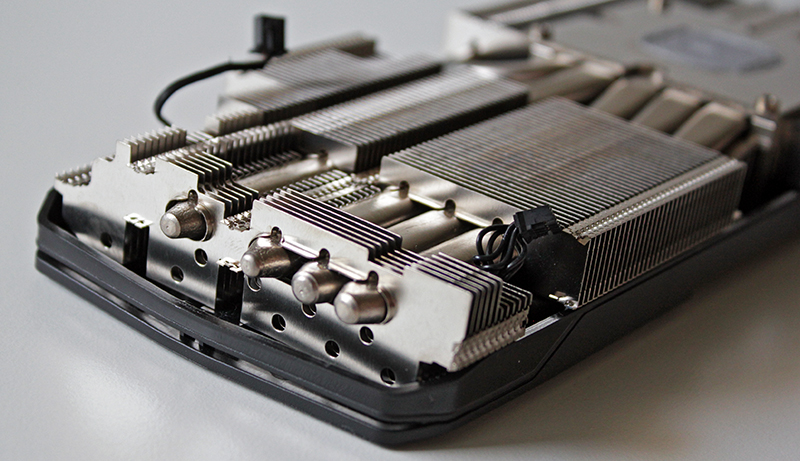 We want to learn how the program runs without any of the files being cached, and we disable it so that each test run we do not have to clear pre-fetch to get accurate numbers. Lastly we disable Superfetch. Superfetch loads often-used programs into the memory. It is one of the reasons that Windows Vista occupies so much memory. Vista fills the memory in an attempt to predict what users will load. Having one test run with files cached, and another test run with the files un-cached would result in inaccurate numbers. Again, since we can’t control its timings so precisely, it we turn it off. Because these four features can potentially interfere with benchmarking, and and are out of our control, we disable them. We do not disable anything else.
We want to learn how the program runs without any of the files being cached, and we disable it so that each test run we do not have to clear pre-fetch to get accurate numbers. Lastly we disable Superfetch. Superfetch loads often-used programs into the memory. It is one of the reasons that Windows Vista occupies so much memory. Vista fills the memory in an attempt to predict what users will load. Having one test run with files cached, and another test run with the files un-cached would result in inaccurate numbers. Again, since we can’t control its timings so precisely, it we turn it off. Because these four features can potentially interfere with benchmarking, and and are out of our control, we disable them. We do not disable anything else.
We ran each test a total of 3 times, and reported the average score from all three scores. Benchmark screenshots are of the median result. Anomalous results were discounted and the benchmarks were rerun.
Please note that due to new driver releases with performance improvements, we rebenched every card shown in the results section.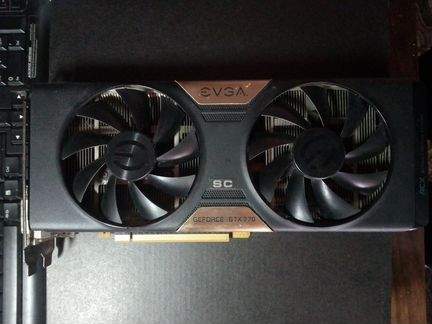 The results here will be different than previous reviews due to the performance increases in drivers.
The results here will be different than previous reviews due to the performance increases in drivers.
Test Rig
| Test Rig | |
| Case | Cooler Master Storm Trooper |
| CPUs | Intel Core i7 3960X (Sandy Bridge-E) @ 4.6GHz |
| Motherboards | ASUS P9X79 WS X79 Chipset Motherboard |
| Ram | Kingston HyperX Genesis 32GB (8x4GB) 1600Mhz 9-9-11-27 Quad-Channel Kit |
| CPU Cooler | Noctua NH-D14 Air Cooler |
| Hard Drives | 2x Western Digital RE3 1TB 7200RPM 3Gb/s Hard Drives in RAID 0 |
| SSD |
|
| Optical | ASUS DVD-Burner |
| GPU |
|
| PSU | Cooler Master Silent Pro Gold 1200W PSU |
| Mouse | Razer Imperator Battlefield 3 Edition |
| Keyboard | Razer Blackwidow Ultimate Battlefield 3 Edition |
Synthetic Benchmarks & Games
| Benchmarks |
|---|
| 3DMark Vantage |
| 3DMark 11 |
| Crysis 2 |
| Just Cause 2 |
| Lost Planet 2 |
| Metro 2033 |
| Battlefield 3 |
Unigine Heaven 3.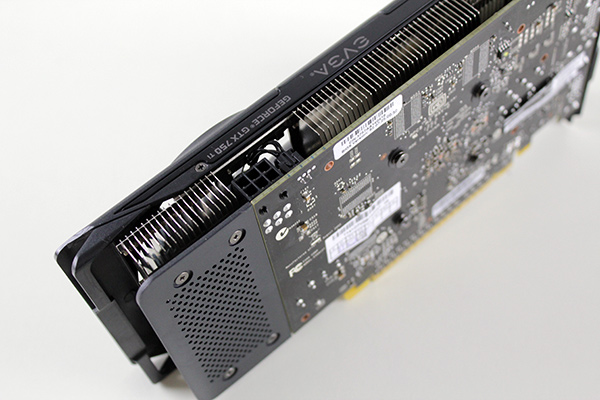 0 0 |
| Batman Arkham City |
| Dirt 3 |
3DMark 11
3DMark 11 is one of the latest DirectX11 3D benchmark tools available to really test the performance of current graphics cards. With many video cards in our list, we can quickly draw some interesting conclusions. Right off the bat, the performance between the GTX 560 SC and the GTX 660 SC are almost double. The reference GTX 660 does come very close to the performance of a GTX 580, while the EVGA GTX 660 SC outperforms last generations flagship video card without a drop of sweat in both preset tests
3DMark Vantage
Taking a look at the older DX10 based 3DMark Vantage benchmark tool, we get similar performance than in 3DMark 11, however, we can see that the EVGA GTX 660 SC actually performs faster in DX11 based applications rather than DX10 based applications. This is because the Kepler architecture used on the GTX 660 is well optimized for the latest DX11 features. Nonetheless, the EVGA GTX 660 SC still showed a major performance improvement over the last generations GTX 560. Our overclocked EVGA GTX 660 SC outperformed the GTX 580. More information about actual specifications for the overclocked card can be found in our overclocking section of this review.
This is because the Kepler architecture used on the GTX 660 is well optimized for the latest DX11 features. Nonetheless, the EVGA GTX 660 SC still showed a major performance improvement over the last generations GTX 560. Our overclocked EVGA GTX 660 SC outperformed the GTX 580. More information about actual specifications for the overclocked card can be found in our overclocking section of this review.
Unigine Heaven 3.0
Unigine Heaven is a benchmark program based on Unigine Corp’s latest engine, Unigine. The engine features DirectX 11, Hardware tessellation, DirectCompute, and Shader Model 5.0. All of these new technologies combined with the ability to run each card through the same exact test means this benchmark should be in our arsenal for a long time.
Unigine Heaven 3.0 is another DX11 based synthetic benchmark. It is one of our most reliable benchmarks to date. We can see exactly what we have expected for the GTX 660. In DX11 applications, the EVGA GTX 660 SC has no problem to dominate last generation’s Fermi architecture.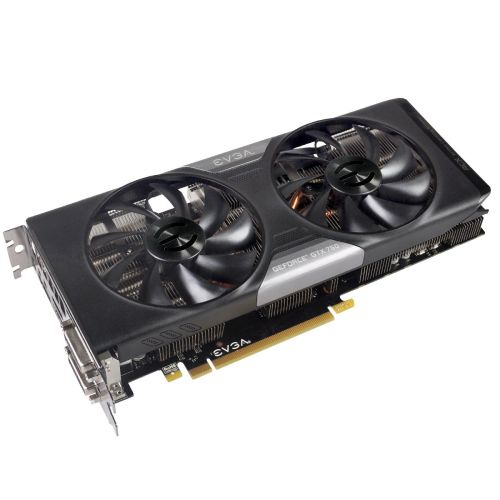 While the AMD HD7970 still is faster than the EVGA GTX 660 SC, we have to keep in mind that the HD7970 is almost double the price of the GTX 660.
While the AMD HD7970 still is faster than the EVGA GTX 660 SC, we have to keep in mind that the HD7970 is almost double the price of the GTX 660.
Battlefield 3
Battlefield 3, still one of the most played first person shooter war action game pushes the limits of even some of the latest mid-range systems. When we’re looking at these results, we’re looking for performance above 40FPS. This will make sure gameplay is very smooth even during heavy action scenes. The EVGA GTX 660 SC video card manages to get a 46.303FPS at a Full HD 1920×1080 resolution. This is fantastic news for those that want to play Battlefield 3, but were unable to play at high resolutions due to their out of date graphics card. The previous generation EVGA SuperClocked GTX 560 showed that the game would only be somewhat playable at 1680×1050, and by knowing this information, we’re assuming that with a GTX 460, the gamer would only be able to play Battlefiled 3 on Ultra settings at lower resolutions of 1280×800.
Metro 2033
Wow, it’s been a long time since Metro 2033 came out, yet it still drags most of the gaming systems to its knees. If we are looking for a playable framerate in Metro 2033, the AA and AF settings might have to be turned down a tad bit. While we played the game at a resolutions of 1920×1080 with Very High Settings on DX11, the game became somewhat choppy during action scenes. We recommend switching over to DX10 mode or set graphics settings to High in order to get a much playable framerate. Needless to say, our manually overclocked EVGA GTX 660 SC managed to once again outperform our Nvidia GTX 580 graphics card.
Batman Arkham City
Batman Arkham City showed some very interesting results. The EVGA GTX 660 SC managed to get very close to the performance of the AMD HD7970, but easily blew the GTX 580 out of the water. With some overclocking, we manged to beat the AMD HD7970 with just 1-2 FPS.
Crysis 2
Crysis 2, Crytek’s latest franchise to bring DX11 within the game. Gameplay performance is excellent, reaching roughly 54.7 FPS at 1920×1080 resolution. Crysis 2 with the latest DX11 Patch, Ultra Texture Pack and Ultra Graphics settings should have no problem performing optimally on an EVGA GTX 660 SC.
Gameplay performance is excellent, reaching roughly 54.7 FPS at 1920×1080 resolution. Crysis 2 with the latest DX11 Patch, Ultra Texture Pack and Ultra Graphics settings should have no problem performing optimally on an EVGA GTX 660 SC.
Just Cause 2
Here comes an interesting benchmark. Just Cause 2. As we have seen earlier, even a GTX 670 had a difficult time keeping up with just the GTX 580. This time around, we can see that this was not an exception, and the Kepler GPUs seem to perform poorer in Just Cause 2. The EVGA GTX 660 even fully overclocked only managed to outperform a factory overclocked Palit GTX 560 Ti Sonic. This is definitely now what we have expected.
Lost Planet 2
Lost Planet 2 showed very similar results to Crysis 2, which is why we won’t go into too much detail here. The key takeaway here is that the GTX 660 should have no problem playing Lost Planet 2 maxed out.
Dirt 3
For the car racing lovers, the EVGA GTX 660 SC showed excellent performance in Dirt 3. We see a big 5FPS improvement of the factory overclocked EVGA GTX 660 SC card over the reference design card from Nvidia. Also we can see a very nice 19-20FPS difference between a EVGA SuperClocked GTX 560 and a EVGA GTX 660 SC.
We see a big 5FPS improvement of the factory overclocked EVGA GTX 660 SC card over the reference design card from Nvidia. Also we can see a very nice 19-20FPS difference between a EVGA SuperClocked GTX 560 and a EVGA GTX 660 SC.
TEMPERATURES
To measure the temperature of the video card, we used EVGA’s Precision X and ran the Metro 2033 benchmark in a loop to find the Load temperatures for the video cards. The highest temperature was recorded. After looping for 10 minutes, Metro 2033 was turned off and we let the computer sit at the desktop for another 10 minutes before we measured the idle temperatures.
While temperatures on the EVGA GTX 660 SC are slightly higher than on the previous generation GTX 560, the fan on the 660 looks to be spinning at a lower RPM. We are not 100% sure weather the fan on the card is actually spinning at a lower RPM, or weather the fan percentage numbers are skewed, but it would make sense that at a lower RPM, the temperatures would be slightly higher than on a faster RPM. Compared to other cards in the list, the EVGA GTX 660 did not do too shabby considering it was running on a reference cooler design.
Compared to other cards in the list, the EVGA GTX 660 did not do too shabby considering it was running on a reference cooler design.
POWER CONSUMPTION
To get our power consumption numbers, we plugged in our Kill A Watt power measurement device and took the Idle reading at the desktop during our temperature readings. We left it at the desktop for about 15 minutes and took the idle reading. Then we ran Metro 2033 for a few minutes minutes and recorded the highest power usage.
One of the fantastic features of the latest Kepler cards include lower power consumption compared to previous generation cards. The EVGA GTX 660 shows this very nicely. At full load it uses 329W of power, while a GTX 580, which competed very closely with the GTX 660 uses almost 100W more at 416W. Idle power consumption has dropped to 127W, the lowest we have measured from all the cards in the bar graph.
Overclocking
Overclocking is one of our interests here at Bjorn3D when it comes to testing GPUs. Since the beginning of this year, we’ve put a lot of time into making sure that all the video cards and other hardware we have tested have the best possible overclocking. We go ahead and test our highest stable overclock in all of our benchmarks. Do check out our other reviews which will have the specific card tested fully overclocked for more information. For our overclocking, no matter what manufacturer makes the cards, we’ve always used EVGA’s Precision X Overclocking Utility. The EVGA Precision X provides overclockers an easy GUI for setting voltages, creating fan profiles, overclocking GPU core clock, shader clock, memory frequency and much. Adjusting power target on certain cards can also make overclocking easier, especially with the real-time monitoring built into the utility. Finally it also has some great features for gamers, which include frame per second limiter to prevent the card from rendering unnecessary frames. This provides for a cooler graphics card, lower power consumption, and quieter operation in instances where additional frames would only create tearing and unnoticeable differences due to limited monitor refresh rates.
Since the beginning of this year, we’ve put a lot of time into making sure that all the video cards and other hardware we have tested have the best possible overclocking. We go ahead and test our highest stable overclock in all of our benchmarks. Do check out our other reviews which will have the specific card tested fully overclocked for more information. For our overclocking, no matter what manufacturer makes the cards, we’ve always used EVGA’s Precision X Overclocking Utility. The EVGA Precision X provides overclockers an easy GUI for setting voltages, creating fan profiles, overclocking GPU core clock, shader clock, memory frequency and much. Adjusting power target on certain cards can also make overclocking easier, especially with the real-time monitoring built into the utility. Finally it also has some great features for gamers, which include frame per second limiter to prevent the card from rendering unnecessary frames. This provides for a cooler graphics card, lower power consumption, and quieter operation in instances where additional frames would only create tearing and unnoticeable differences due to limited monitor refresh rates.
While in our previous “Kepler” line of GPUs, we were able to overclock our GPU to really high frequencies, even 300+ MHz on the core clock speed and 400+ MHz on the memory frequency, the EVGA GTX 660 struggled to even get up to 75 MHz higher from the standard factory overclock. With the factory overclock only being roughly 66MHz higher than the reference card, we should have been able to see at least 150 MHz overclock on the GPU. Sadly even with maximum voltage settings, and the power target set to 110%, we were only able to reach 75 MHz higher from the factory overclocked settings. On the other hand the memory overclocked just as good as we have expected. We settled at a very stable 350 MHz overclock from the standard 6008Mhz effective frequencies.
So did the EVGA GeForce GTX 660 SuperClocked 2GB video card meet our expectations? Heck yeah it did, with far more than what we have expected. Initially we thought we will be taking a look at a fairly decent card, a tad bit faster than the last generation Fermi GeForce GTX 560, but we actually got a card on our hands that was able to blow the Nvidia GeForce GTX 580 out of the water in some of our benchmarks, along with a much lower power consumption, and much lower heat output at a very quiet full load operation.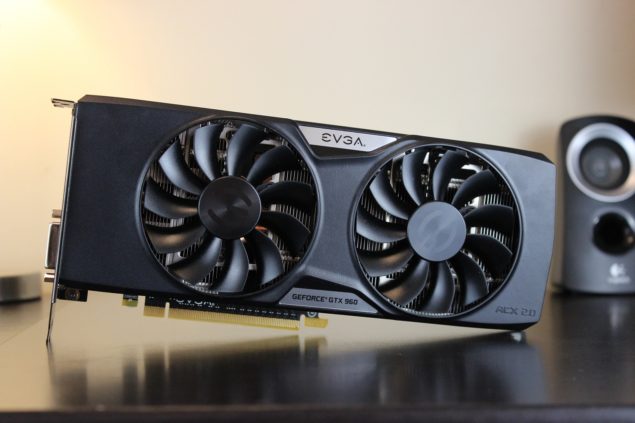 At a price of $229, this video card is a steal. Get two of these and throw them in SLI, and you got yourself a beast of a system that will power your gaming system for years to come.
At a price of $229, this video card is a steal. Get two of these and throw them in SLI, and you got yourself a beast of a system that will power your gaming system for years to come.
But the best part is, that with the release of the GeForce GTX 660 graphics cards, gamers on a budget can finally afford a card that will nicely replace their previous DX10 based cards, or upgrade their current lower-end DX11 compatible cards. While the EVGA GTX 660 SC did not satisfy us in the overclocking, the card can still be considered as one of the best bang for the buck video cards currently on the market. Knowing that some AMD Radeon HD 7850 cards come with 1GB VRAM, makes this, and even the 3GB version of the GTX 660 look even better for any gamer that is planning on gaming at HD resolutions. Finally we’d like to add that while the factory overclock on the EVGA GTX 660 SC is not too crazy, it is still a very nice improvement in performance in some of the games we have tested. With this said, we’d highly recommend the card to any gamer upgrading from a previously custom build system, or for those currently building a budget gaming system.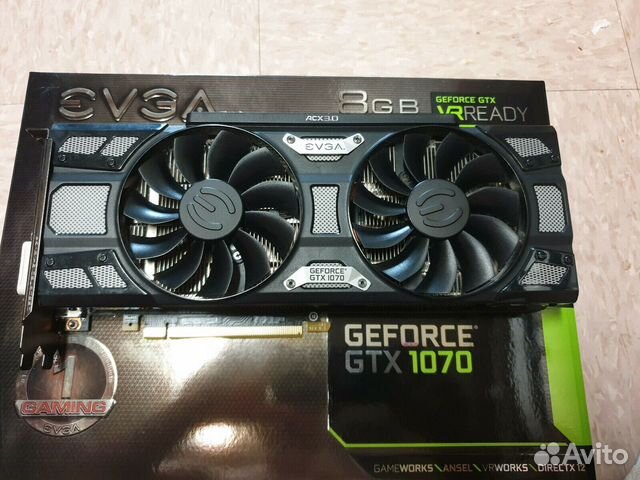
| OUR VERDICT: EVGA GeForce GTX 660 SuperClocked 2GB Video Card | ||||||||||||||||
|
||||||||||||||||
| Summary: While performance on the EVGA GTX 660 SC 2GB video card was exceptional in most of the video games and benchmarks we have ran, our expectations fell short during overclocking. However, we’d still like to acknowledge that the EVGA GTX 660 SC is an excellent card, and any gamer running on older hardware should upgrade to at least this graphics card to enjoy the latest games that will be coming out this year. The EVGA GTX 660 SC 2GB video card receives Bjorn3D’s Silver Bear Award with a score of 8.5 out of 10. |
EVGA GeForce GTX 660 Superclocked review
39points
EVGA GeForce GTX 660 Superclocked
EVGA GeForce GTX 660 Superclocked
Why is EVGA GeForce GTX 660 Superclocked better than the average?
- Thermal Design Power (TDP)?
140Wvs191. 46W
46W - Power consumption while under peak load?
296Wvs323.6W - DVI outputs?
2vs0.79 - Width?
241mmvs256.02mm - Height?
111mmvs122.3mm
Which are the most popular comparisons?
Nvidia GeForce GTX 1650
vs
Nvidia GeForce RTX 3050 Laptop
AMD Radeon RX 5500M
vs
Nvidia GeForce GTX 1650
Nvidia GeForce RTX 3050 Laptop
vs
Nvidia GeForce RTX 3050 Ti Laptop
Nvidia GeForce RTX 3050 Ti Laptop
vs
Nvidia GeForce RTX 3060 Laptop
Nvidia GeForce GTX 1650 Ti Laptop
vs
Nvidia GeForce RTX 3050 Laptop
AMD Radeon RX 5500M
vs
Nvidia GeForce RTX 3050 Laptop
AMD Radeon RX 6500 XT
vs
Nvidia GeForce GTX 1650
Nvidia GeForce GTX 1650
vs
Nvidia GeForce GTX 1650 Ti Laptop
Nvidia GeForce RTX 3050 Laptop
vs
Nvidia GeForce RTX 3060 Laptop
Nvidia GeForce GTX 1650
vs
Nvidia GeForce RTX 3050 Ti Laptop
Price comparison
User reviews
Performance
1.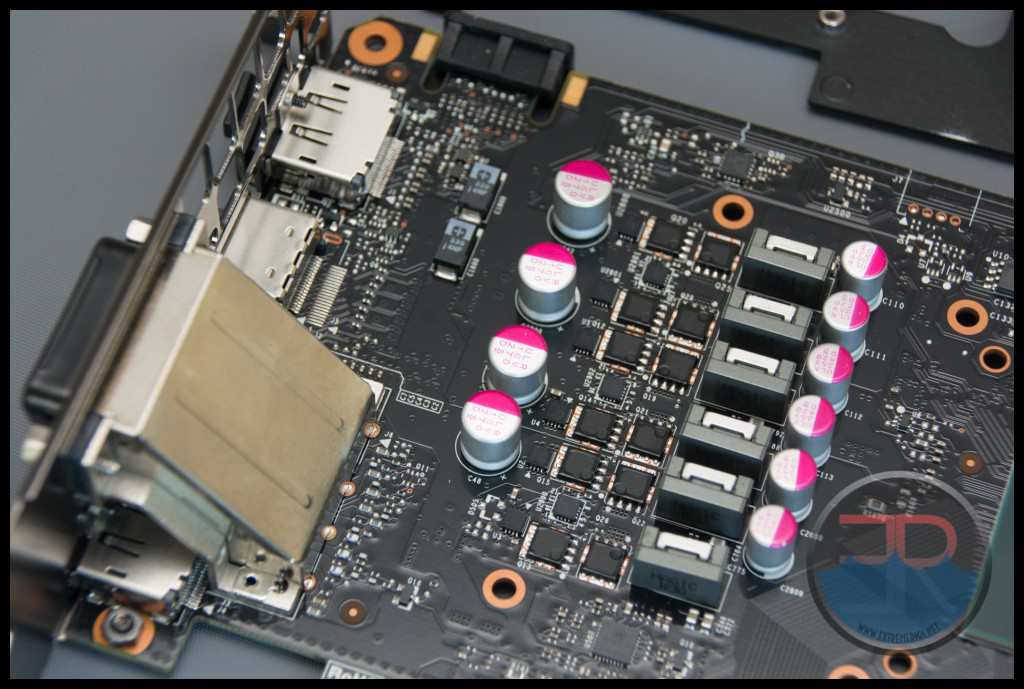 GPU clock speed
GPU clock speed
1046MHz
The graphics processing unit (GPU) has a higher clock speed.
2.GPU turbo
1110MHz
When the GPU is running below its limitations, it can boost to a higher clock speed in order to give increased performance.
3.pixel rate
20.9 GPixel/s
The number of pixels that can be rendered to the screen every second.
4.floating-point performance
2.01 TFLOPS
Floating-point performance is a measurement of the raw processing power of the GPU.
5.texture rate
83.7 GTexels/s
The number of textured pixels that can be rendered to the screen every second.
6.GPU memory speed
1502MHz
The memory clock speed is one aspect that determines the memory bandwidth.
7.shading units
Shading units (or stream processors) are small processors within the graphics card that are responsible for processing different aspects of the image.
8.texture mapping units (TMUs)
TMUs take textures and map them to the geometry of a 3D scene. More TMUs will typically mean that texture information is processed faster.
9.render output units (ROPs)
The ROPs are responsible for some of the final steps of the rendering process, writing the final pixel data to memory and carrying out other tasks such as anti-aliasing to improve the look of graphics.
Memory
1.effective memory speed
6008MHz
The effective memory clock speed is calculated from the size and data rate of the memory. Higher clock speeds can give increased performance in games and other apps.
2.maximum memory bandwidth
144GB/s
This is the maximum rate that data can be read from or stored into memory.
3.VRAM
VRAM (video RAM) is the dedicated memory of a graphics card.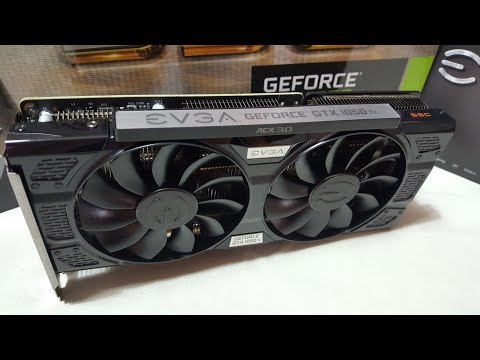 More VRAM generally allows you to run games at higher settings, especially for things like texture resolution.
More VRAM generally allows you to run games at higher settings, especially for things like texture resolution.
4.memory bus width
192bit
A wider bus width means that it can carry more data per cycle. It is an important factor of memory performance, and therefore the general performance of the graphics card.
5.version of GDDR memory
Newer versions of GDDR memory offer improvements such as higher transfer rates that give increased performance.
6.Supports ECC memory
✖EVGA GeForce GTX 660 Superclocked
Error-correcting code memory can detect and correct data corruption. It is used when is it essential to avoid corruption, such as scientific computing or when running a server.
Features
1.DirectX version
DirectX is used in games, with newer versions supporting better graphics.
2. OpenGL version
OpenGL version
OpenGL is used in games, with newer versions supporting better graphics.
3.OpenCL version
Some apps use OpenCL to apply the power of the graphics processing unit (GPU) for non-graphical computing. Newer versions introduce more functionality and better performance.
4.Supports multi-display technology
✔EVGA GeForce GTX 660 Superclocked
The graphics card supports multi-display technology. This allows you to configure multiple monitors in order to create a more immersive gaming experience, such as having a wider field of view.
5.load GPU temperature
A lower load temperature means that the card produces less heat and its cooling system performs better.
6.supports ray tracing
✖EVGA GeForce GTX 660 Superclocked
Ray tracing is an advanced light rendering technique that provides more realistic lighting, shadows, and reflections in games.
7.Supports 3D
✔EVGA GeForce GTX 660 Superclocked
Allows you to view in 3D (if you have a 3D display and glasses).
8.supports DLSS
✖EVGA GeForce GTX 660 Superclocked
DLSS (Deep Learning Super Sampling) is an upscaling technology powered by AI. It allows the graphics card to render games at a lower resolution and upscale them to a higher resolution with near-native visual quality and increased performance. DLSS is only available on select games.
9.PassMark (G3D) result
This benchmark measures the graphics performance of a video card. Source: PassMark.
Ports
1.has an HDMI output
✔EVGA GeForce GTX 660 Superclocked
Devices with a HDMI or mini HDMI port can transfer high definition video and audio to a display.
2.HDMI ports
Unknown. Help us by suggesting a value.
More HDMI ports mean that you can simultaneously connect numerous devices, such as video game consoles and set-top boxes.
3.HDMI version
Unknown. Help us by suggesting a value.
Newer versions of HDMI support higher bandwidth, which allows for higher resolutions and frame rates.
4.DisplayPort outputs
Allows you to connect to a display using DisplayPort.
5.DVI outputs
Allows you to connect to a display using DVI.
6.mini DisplayPort outputs
Allows you to connect to a display using mini-DisplayPort.
Price comparison
Cancel
Which are the best graphics cards?
eVGA GeForce GTX 660 Superclocked Review
When Kepler was introduced a few months ago, it was understandably only available on the high end video cards that were priced to all but the most hardcore PC gamer.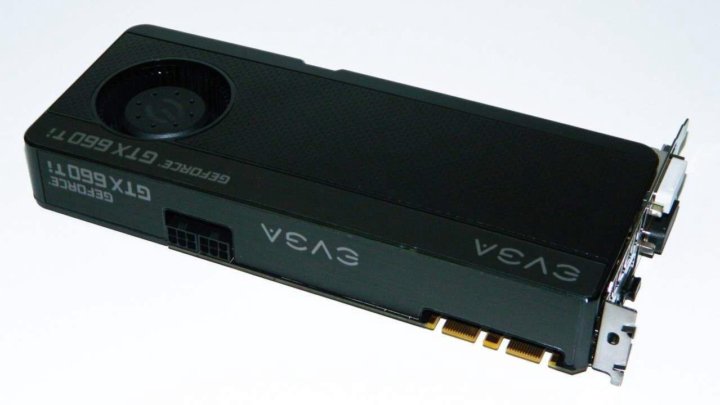 That’s usually the case when a company introduces new technologies. Well, the time has come for a more affordable Kepler based card and today NVIDIA and their board partners are releasing the GeForce GTX 660 and the GeForce GTX 650. What we have here today due to the generosity of NVIDIA and eVGA is the GeForce GTX 660.
That’s usually the case when a company introduces new technologies. Well, the time has come for a more affordable Kepler based card and today NVIDIA and their board partners are releasing the GeForce GTX 660 and the GeForce GTX 650. What we have here today due to the generosity of NVIDIA and eVGA is the GeForce GTX 660.
The GeForce GTX 660 is using a new GPU titled GK106. You can see the architecture of the GK106 below.
Now the card has all the features that you’ve come to know from the launch of Kepler in the GeForce GTX 680 card. SMX units, five in the GTX 660, give you 960 CUDA cores and 80 texture units. SMX was designed for more processing power while also consuming less power than previous generation DX11 GPUs. The full specifications is outlined below.
Another feature touted in Kepler has been GPU Boost. While the video card runs at a base clock speed, GPU Boost will automatically kick it a little further when doing graphically intensive tasks.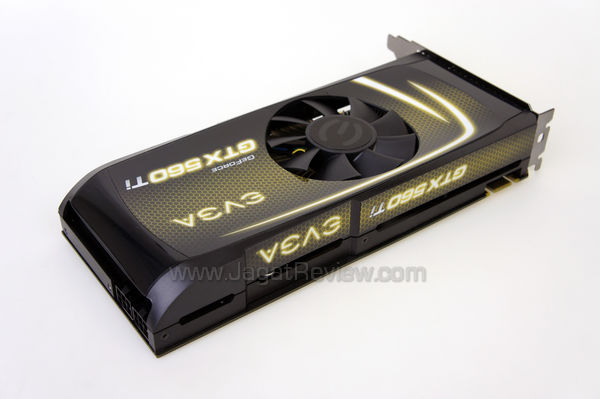 Base clock for the GTX 660 is 980MHz. Now, once you fire up some games, it can boost up to an average of 1033MHz, giving you a 5% increase. 1033MHz isn’t the top end as it can go a wee bit higher, but that’s the average as documented by NVIDIA. There’s still even more headroom so expect some cards from other board partners that are overclocked out of the box and this is what we have here with eVGA’s card. The base clock out of the box is 1046MHz and the average boosted clock speed is 1111MHz. That’s a nice little gain from the reference specifications that NVIDIA has.
Base clock for the GTX 660 is 980MHz. Now, once you fire up some games, it can boost up to an average of 1033MHz, giving you a 5% increase. 1033MHz isn’t the top end as it can go a wee bit higher, but that’s the average as documented by NVIDIA. There’s still even more headroom so expect some cards from other board partners that are overclocked out of the box and this is what we have here with eVGA’s card. The base clock out of the box is 1046MHz and the average boosted clock speed is 1111MHz. That’s a nice little gain from the reference specifications that NVIDIA has.
For memory, the eVGA GeForce GTX 660 comes in 2GB or 3GB and we have the 2GB configuration here. Memory speed is rated at 6008MHz, which matches the reference specs and you get a bandwidth of 144.19GB/s.
As far as the physical features of the card the eVGA card is 9.5″ long and contains two Dual-Link DVI ports, one HDMI port, and one DisplayPort. The whole card is enclosed in a casing and there’s one single 6-pin power port at the top to power the card. Also at the top is a single SLI connector allowing you to connect one other GeForce GTX 660 card for SLI performance.
Also at the top is a single SLI connector allowing you to connect one other GeForce GTX 660 card for SLI performance.
The card runs pretty quiet in my enclosed system, even when on full load from various games. I have some pretty quiet fans running in my setup currently and the GeForce GTX 660 Superclocked didn’t seem audible at all when running, which is great if you’re looking for a quiet system to build.
A few NVIDIA specific features help make their card stand out. A NVIDIA specific feature called PhysX can really impart improved visuals into a game. I’ve used PhysX a lot with games like Batman: Arkham City and Batman: Arkham Asylum. Below you can see what improvements can be seen with a game like Borderlands 2.
TXAA is a newer anti-aliasing method introduced with Kepler. Now, you’ll need a game programmed to use it, such as The Secret World. Future games such as Mechwarrior: Online will take advantage of TXAA giving you a much improved picture quality over other anti-aliasing methods.
Future games such as Mechwarrior: Online will take advantage of TXAA giving you a much improved picture quality over other anti-aliasing methods.
Adaptive V-Sync is a feature that helps smooth video performance and is available for other cards than just Kepler based ones. People run V-Sync to try and get as smooth of a picture as possible and to eliminate tearing during motion. Sometimes though, the frames per second fall below the 60Hz of a monitor and then you’ll get jittering. With adaptive V-Sync , V-Sync will turn off when it falls below the threshold and turn back on when it goes above it, producing a smoother all around picture, as demonstrated by NVIDIA’s video.
As I don’t have a competitor card to test against, I do have on hand a card that’s pretty popular on Steam right now. NVIDIA’s GeForce 9800 GT is still in use well over four years since its launch, so we’re going to test how much of an improvement over that card should you decide to upgrade to the GeForce GTX 660. It’s definitely not an apples to apples comparison, just what you can expect if you upgrade to a popular card being used today/
NVIDIA’s GeForce 9800 GT is still in use well over four years since its launch, so we’re going to test how much of an improvement over that card should you decide to upgrade to the GeForce GTX 660. It’s definitely not an apples to apples comparison, just what you can expect if you upgrade to a popular card being used today/
My test system consists of:
Intel i7-2600K processor
12GB of RAM
Gigabyte GA-Z68X-UD3H-B3 motherboard
128GB Crucial M4 SSD drive
Windows 7 w/ Service Pack 1 installed
NVIDIA 306.23 drivers
I’m going to run through various types of games from fighting to action to strategy, just to give a broad scope of titles. I’ve also thrown a synthetic benchmark in there for those interested in Unigen Heaven. All tests were run at least three times and then an average was taken and displayed in the graph below. If you’re interested to see what I had in my settings for some of the games, they are included in the screenshots at the end of the article.
Unigen Heaven
Battlefield III — For Battlefield 3, I ran through the first part of the Uprising mission and used FRAPS to benchmark the game.
Batman: Arkham City — I used the built in benchmark.
Diablo III — I ran the very beginning of Act I before going into town as that was one of the few parts of the game that doesn’t change and recorded the results using FRAPS.
The Elder Scrolls V: Skyrim — In Riften, I ran around the area taking the same path each time I tested while using FRAPS to benchmark the game.
Max Payne 3 — I loaded up Chapter III and played through the beginning five minutes while running FRAPS.
Sid Meier’s Civilization V — Here I also used the built in benchmark and used FRAPS as well to get an average FPS. I selected the DX10/DX11 version.
Super Street Fighter IV Arcade Edition — I used the built in benchmark.
Warhammer 40K: Dawn of War II — Again, I used the built in benchmark.
You can see just how much an improvement, performance wise if you are using an older GeForce card compared to the the GeForce GTX 660. And, you’ll benefit from getting all the features of a DirectX 11 card as well as some Kepler specific features like TXAA. But, the fact is there’s a lot of power in this nicely priced card to let you game at 1920×1080 with high settings throughout. You can see that all the games are running at more than you need in terms of getting smooth gameplay and there’s some wiggle room to up the settings in some of the games tested. Also, the card uses less power in its class and performs better so you’re getting great performance without using as much power.
Let me also impart on those interested in a GeForce GTX 660 and are wondering what brand to pick up. eVGA, who provided this card to us by the way, has a three year warranty, which can be upgraded to five or ten when you register your card. Now this covers the product, so if the card changes ownership, the new owner will still be able to get service if the card is still in warranty. It’s a pretty good deal and one of the reasons I recommend the eVGA line of products.
eVGA, who provided this card to us by the way, has a three year warranty, which can be upgraded to five or ten when you register your card. Now this covers the product, so if the card changes ownership, the new owner will still be able to get service if the card is still in warranty. It’s a pretty good deal and one of the reasons I recommend the eVGA line of products.
With that said, the GeForce GTX 660 is a great performing mid range card. It’s made for gaming at high levels at 1920×1080 resolution and it does so with room to spare. I was surprised at how well the card did perform across the gamut of games I ran through. The eVGA GeForce GTX 660 Superclocked runs at $229.00, which is the same price as normal clocked cards giving you great value for the money. If you’re a few generations behind and are looking for a good card to upgrade to, you can’t go wrong with eVGA’s version of the GeForce GTX 660. Priced well and performing great, the GeForce GTX 660 brings Kepler to more folks than before and combined with their GeForce GTX 650 line of cards, almost anyone can get into the game with Kepler now.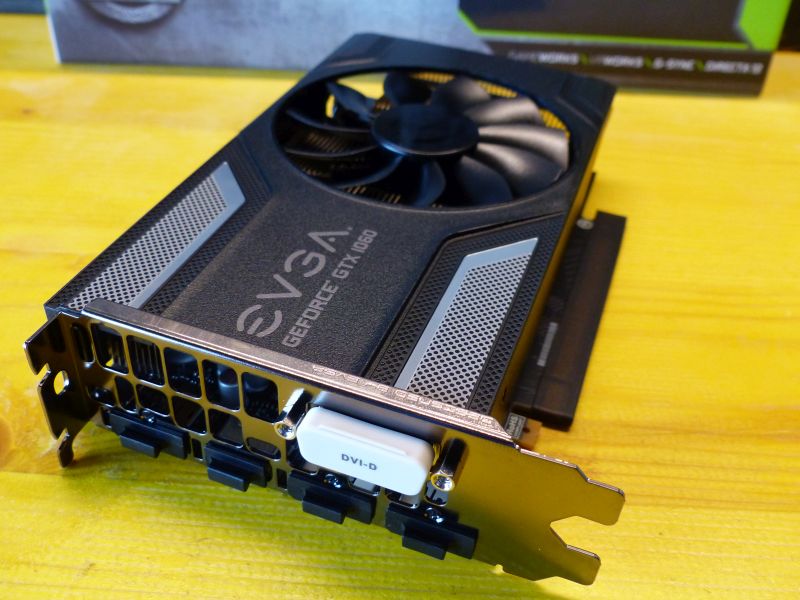
EVGA GeForce GTX 660 — 31 secret facts, review, specifications, reviews.
Top specifications and features
- Passmark score
- 3DMark Fire Strike Graphics test score
- GPU base clock
- RAM
- Memory Bandwidth
Passmark
EVGA GeForce GTX 660 test score:
3897
Best score:
29325
Performance
EVGA GeForce GTX 660:
1784
Best score:
Memory
EVGA GeForce GTX 660:
502
Best score:
General Information
EVGA GeForce GTX 660:
75
Best score:
EVGA GeForce GTX 660 features:
149
Best score:
Description
EVGA GeForce GTX 660 video card based on Kepler architecture has 2540 million transistors, tech.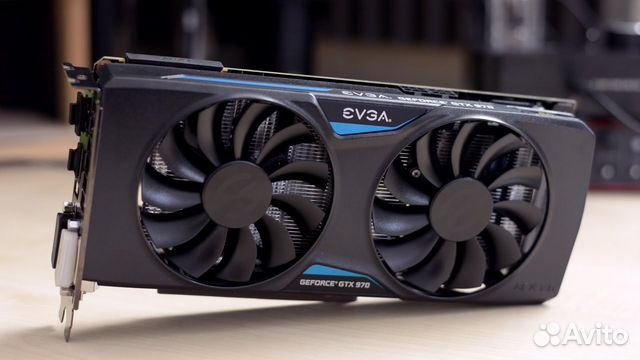 process 28 nm. The frequency of the graphics core is 993 MHz. In terms of memory, 2 GB is installed here. DDR5, clocked at 1502 MHz and with a maximum throughput of 144 Gb/s. The texture size is 79.4 GTexels/s. FLOPS is 1.81.
process 28 nm. The frequency of the graphics core is 993 MHz. In terms of memory, 2 GB is installed here. DDR5, clocked at 1502 MHz and with a maximum throughput of 144 Gb/s. The texture size is 79.4 GTexels/s. FLOPS is 1.81.
In tests, the EVGA GeForce GTX 660 graphics card showed itself as follows — according to the Passmark benchmark, the model scored 3897 points. At the same time, the maximum number of points for today is 260261 points. According to the 3DMark benchmark, the video card scored 4939 points out of 49575 possible.
Directx version — 11. OpenGL version — 4.3. Regarding cooling, here the heat dissipation requirements are 140 watts.
In our tests, the video card scores 121706 points.
Why the EVGA GeForce GTX 660 is better than others
- Base GPU clock speed 993 MHz. This parameter is higher than that of 48%
- GPU memory frequency 1502 MHz. This parameter is higher than that of 51%
- Passmark score 3897 .
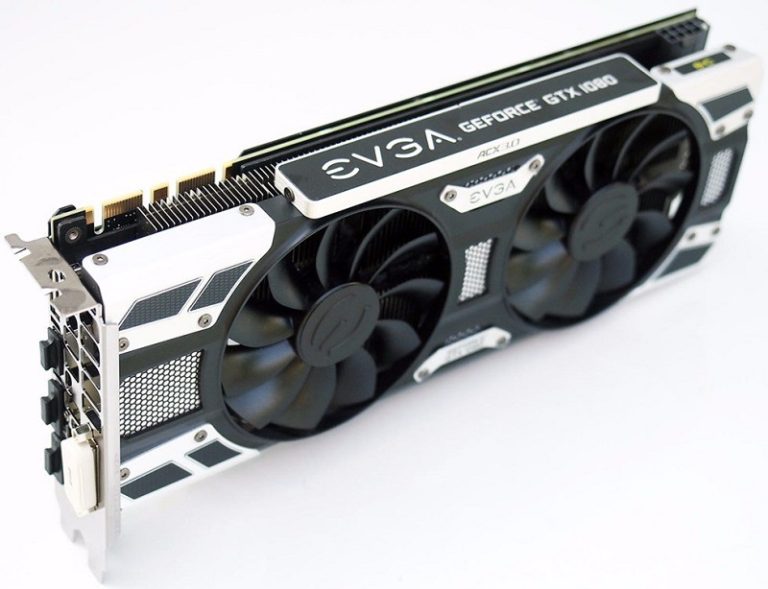 This parameter is lower than that of 37%
This parameter is lower than that of 37% - 3DMark Fire Strike Graphics test score 4939 . This parameter is lower than that of 34%
- RAM 2 GB. This parameter is lower than 54%
- Memory bandwidth 144 GB/s. This parameter is lower than 42%
- Effective memory speed 6008 MHz. This parameter is lower than 34%
- Octane Render test score OctaneBench 31 . This parameter is lower than that of 11%
EVGA GeForce GTX 660 Review
Performance
Memory
general information
Functions
Ports
Tests in benchmarks
EVGA GeForce GTX 660 Review Highlights
GPU base clock
The graphics processing unit (GPU) has a high clock speed.
993MHz
max 2457
Average: 938 MHz
2457MHz
GPU memory frequency
This is an important aspect calculating memory bandwidth
1502MHz
max 16000
Average: 1326. 6 MHz
6 MHz
16000MHz
FLOPS
A measure of the processing power of a processor is called FLOPS.
1.81TFLOPS
max 1142.32
Average: 92.5 TFLOPS
1142.32TFLOPS
Turbo GPU
If the speed of the GPU drops below its limit, it can switch to a high clock speed to improve performance.
Show all
1058MHz
max 2903
Average: 1375.8 MHz
2903MHz
Texture size
A certain number of textured pixels are displayed on the screen every second.
Show all
79.4 GTexels/s
max 756.8
Average: 145. 4 GTexels/s
4 GTexels/s
756.8 GTexels/s
Architecture name
Kepler
GPU name
GK106
Memory bandwidth
This is the speed at which the device stores or reads information.
144GB/s
max 2656
Average: 198.3 GB/s
2656GB/s
Effective memory speed
The effective memory clock speed is calculated from the size and information transfer rate of the memory. The performance of the device in applications depends on the clock frequency. The higher it is, the better.
Show all
6008MHz
max 19500
Average: 6984.5 MHz
19500MHz
RAM
2GB
max 128
Average: 4.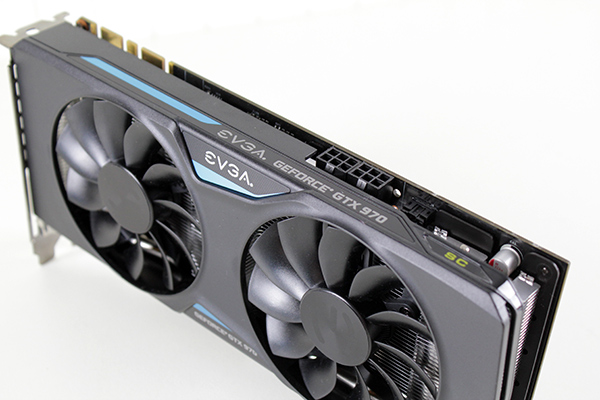 6 GB
6 GB
128GB
GDDR Memory Versions
Latest GDDR memory versions provide high data transfer rates for improved overall performance
Show all
5
Average: 4.5
6
Memory bus width
A wide memory bus indicates that it can transfer more information in one cycle. This property affects the performance of the memory as well as the overall performance of the device’s graphics card.
Show all
192bit
max 8192
Average: 290.1bit
8192bit
Heat dissipation (TDP)
Heat dissipation requirement (TDP) — the maximum possible amount of energy dissipated by the cooling system. The lower the TDP, the less power will be consumed.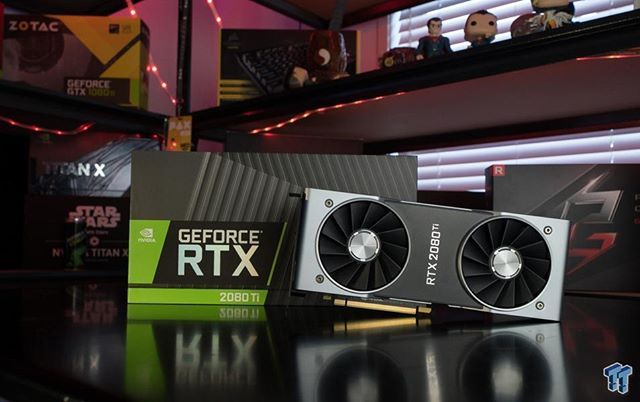
Show all
140W
Average: 140.4 W
2W
Process technology
The small size of the semiconductor means it is a new generation chip.
28 nm
Average: 47.5 nm
4 nm
Number of transistors
The higher their number, the more processor power it indicates
2540 million
max 80000
Average: 5043 million
80000 million
PCIe version
Considerable speed is provided for an expansion card used to connect a computer to peripherals. The updated versions have impressive throughput and provide high performance.
Show all
3
Mean: 2. 8
8
5
Width
241mm
max 421.7
Average: 242.6mm
421.7 mm
Height
111mm
max 180
Average: 119.1mm
180mm
DirectX
Used in demanding games, providing enhanced graphics
eleven
max 12.2
Average: 11.1
12.2
OpenCL version
Used by some applications to enable GPU power for non-graphical calculations. The newer the version, the more functional it will be
Show all
1.1
max 4.6
Average: 1. 7
7
4.6
opengl version
Later versions provide better game graphics
4.3
max 4.6
Average: 4
4.6
Shader model version
5.1
max 6.6
Average: 5.5
6.6
Version Vulkan
1.1
CUDA Version
Yes
Has HDMI output
HDMI output allows you to connect devices with HDMI or mini HDMI ports. They can transmit video and audio to the display.
Show all
Yes
DisplayPort
Allows you to connect to a display using DisplayPort
one
Average: 2
4
DVI outputs
Allows connection to a display using DVI
2
Mean: 1. 4
4
3
HDMI
Yes
Passmark test score
3897
max 29325
Average: 7628.6
29325
3DMark Fire Strike Graphics test score
4939
max 49575
Average: 11859.1
49575
Octane Render test score OctaneBench
31
max 125
Average: 47.1
125
FAQ
How much RAM does the EVGA GeForce GTX 660 have
EVGA GeForce GTX 660 has 2 GB.
What version of RAM does the EVGA GeForce GTX 660
EVGA GeForce GTX 660 support GDDR5.
What is the architecture of the EVGA GeForce GTX 660
Kepler.
How many watts does the EVGA GeForce GTX 660 consume
140 Watt.
How the EVGA GeForce GTX 660 performs in the benchmarks
The card scored 3897 points in the Passmark benchmark.
EVGA GeForce GTX 660 FLOPS
1.81 TFLOPs.
Which PCIe version does it support?
PCIe version 3.
Which version of DirectX does the EVGA GeForce GTX 660 support
DirectX 11.
Does the EVGA GeForce GTX 660 support DVI
2 DVI ports.
How many display ports does the EVGA GeForce GTX 660 have
1 DisplayPort.
Does the EVGA GeForce GTX 660 support CUDA?
Yes.
leave your feedback
EVGA GeForce GTX 660 Superclocked
39points
EVGA GeForce GTX 660 Superclocked
EVGA GeForce GTX 660 Superclocked
Why is the EVGA GeForce GTX 660 Superclocked better than others?
- Design requirements for heat dissipation (TDP)?
140W vs 191. 46W
46W - Power consumption at peak load?
296W vs 323.6W - DVI outputs?
2 vs 0.79 - Width?
241mm vs 256.02mm - Height?
111mm vs 122.3mm
Which comparisons are the most popular?
Nvidia GeForce GTX 1650
vs
Nvidia GeForce RTX 3050 Laptop
AMD Radeon RX 5500M
vs
Nvidia GeForce GTX 1650
Nvidia GeForce RTX 3050 Laptop
vs
Nvidia GeForce RTX 3050 Ti Laptop
Nvidia GeForce RTX 3050 Ti Laptop
vs
Nvidia GeForce RTX 3060 Laptop
Nvidia GeForce GTX 1650 Ti Laptop
vs
Nvidia GeForce RTX 3050 Laptop
AMD Radeon RX 5500M
vs
Nvidia GeForce RTX 3050 Laptop
AMD Radeon RX 6500 XT
vs
Nvidia GeForce GTX 1650
Nvidia GeForce GTX 1650
vs
Nvidia GeForce GTX 1650 Ti Laptop
Nvidia GeForce RTX 3050 Laptop
vs
Nvidia GeForce RTX 3060 Laptop
Nvidia GeForce GTX 1650
vs
Nvidia GeForce RTX 3050 Ti Laptop
Price Comparison
User Reviews
Performance
1. GPU Clock Speed
GPU Clock Speed
1046MHz
The graphics processing unit (GPU) has a higher clock speed.
2.turbo GPU
1110MHz
When the GPU is running below its limits, it can jump to a higher clock speed to increase performance.
3.pixel rate
20.9 GPixel/s
The number of pixels that can be displayed on the screen every second.
4.flops
2.01 TFLOPS
FLOPS is a measurement of GPU processing power.
5.texture size
83.7 GTexels/s
Number of textured pixels that can be displayed on the screen every second.
6.GPU memory speed
1502MHz
Memory speed is one aspect that determines memory bandwidth.
7.shading patterns
Shading units (or stream processors) are small processors in a video card that are responsible for processing various aspects of an image.
8.textured units (TMUs)
TMUs accept textured units and bind them to the geometric layout of the 3D scene. More TMUs generally means texture information is processed faster.
9 ROPs
ROPs are responsible for some of the final steps of the rendering process, such as writing the final pixel data to memory and for performing other tasks such as anti-aliasing to improve the appearance of graphics.
Memory
1.memory effective speed
6008MHz
The effective memory clock frequency is calculated from the memory size and data transfer rate. A higher clock speed can give better performance in games and other applications.
2.max memory bandwidth
144GB/s
This is the maximum rate at which data can be read from or stored in memory.
3.VRAM
VRAM (video RAM) is the dedicated memory of the graphics card.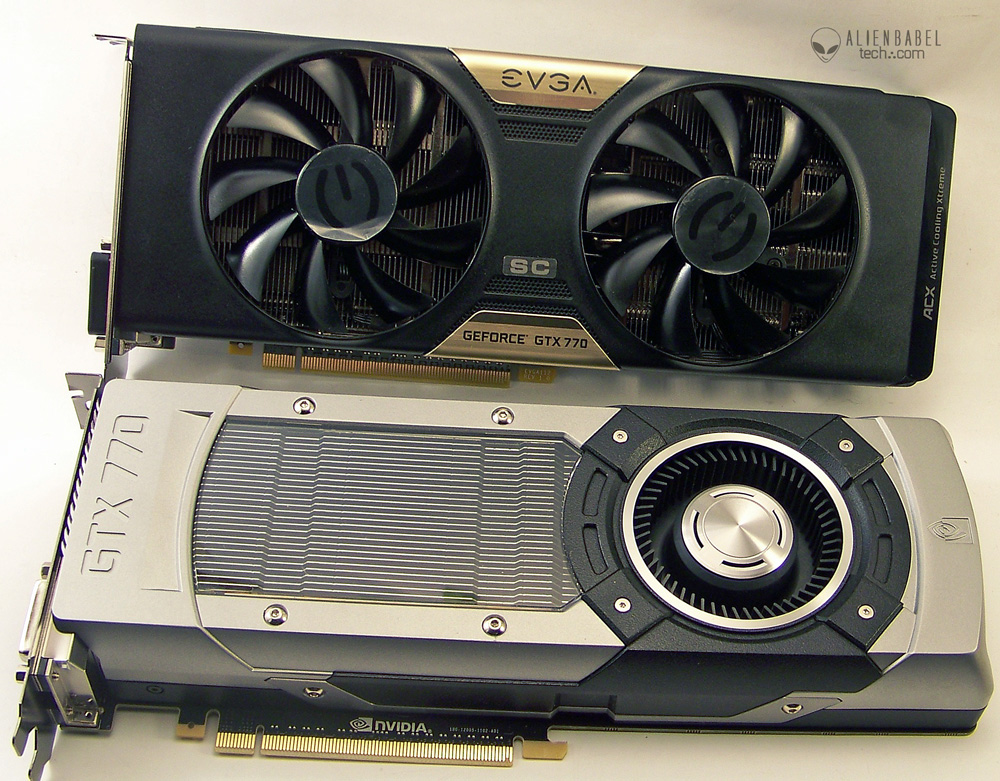 More VRAM usually allows you to run games at higher settings, especially for things like texture resolution.
More VRAM usually allows you to run games at higher settings, especially for things like texture resolution.
4. memory bus width
192bit
Wider memory bus means it can carry more data per cycle. This is an important factor in memory performance, and therefore the overall performance of the graphics card.
5 versions of GDDR memory
Later versions of GDDR memory offer improvements such as higher data transfer rates, which improves performance.
6. Supports memory debug code
✖EVGA GeForce GTX 660 Superclocked
Memory debug code can detect and fix data corruption. It is used when necessary to avoid distortion, such as in scientific computing or when starting a server.
Functions
1.DirectX version
DirectX is used in games with a new version that supports better graphics.
OpenGL version 2.
The newer version of OpenGL, the better graphics quality in games.
OpenCL version 3.
Some applications use OpenCL to use the power of the graphics processing unit (GPU) for non-graphical computing. Newer versions are more functional and better quality.
4.Supports multi-monitor technology
✔EVGA GeForce GTX 660 Superclocked
The video card is capable of connecting multiple displays. This allows you to set up multiple monitors at the same time to create a more immersive gaming experience, such as a wider field of view.
5.GPU temperature at boot
Lower boot temperature means the card generates less heat and the cooling system works better.
6.supports ray tracing
✖EVGA GeForce GTX 660 Superclocked
Ray tracing is an advanced light rendering technique that provides more realistic lighting, shadows and reflections in games.
7.Supports 3D
✔EVGA GeForce GTX 660 Superclocked
Allows you to view in 3D (if you have a 3D screen and glasses).
8.DLSS supported
✖EVGA GeForce GTX 660 Superclocked
DLSS (Deep Learning Super Sampling) is an AI based scaling technology. This allows the graphics card to render games at lower resolutions and upscale them to higher resolutions with near-native visual quality and improved performance. DLSS is only available in some games.
9. PassMark result (G3D)
This test measures the graphics performance of a graphics card. Source: Pass Mark.
Ports
1.has HDMI output
✔EVGA GeForce GTX 660 Superclocked
Devices with HDMI or mini HDMI ports can stream HD video and audio to the connected display.
2.HDMI connectors
Unknown.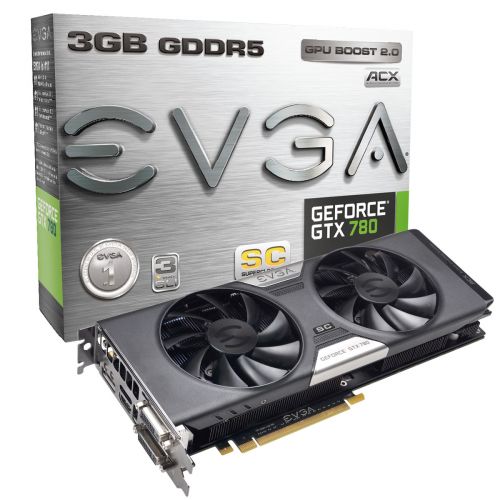 Help us offer a price.
Help us offer a price.
More HDMI connections allow you to connect multiple devices at the same time, such as game consoles and TVs.
HDMI version 3
Unknown. Help us offer a price.
Newer versions of HDMI support higher bandwidth, resulting in higher resolutions and frame rates.
4. DisplayPort outputs
Allows connection to a display using DisplayPort.
5.DVI outputs
Allows connection to a display using DVI.
Mini DisplayPort 6 outputs
Allows connection to a display using Mini DisplayPort.
Price match
Cancel
Which graphic cards are better?
Overview of NVIDIA GeForce GTX 660
Statistics are stubborn things. About 90% of active players use video cards costing $100-300. More affordable models, as a rule, cannot provide proper performance in games, and more expensive models are of interest only to the most enthusiastic enthusiasts.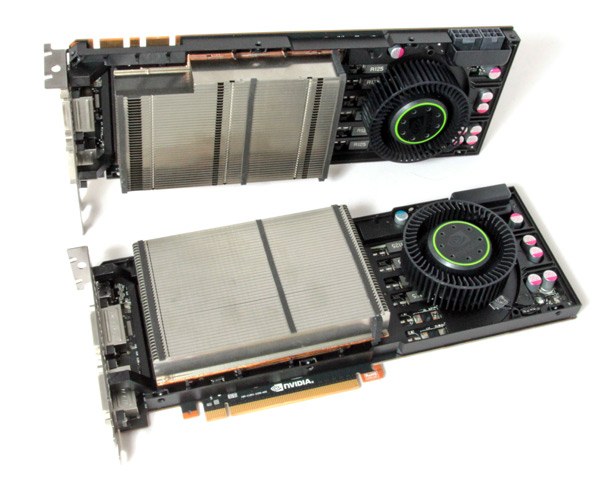 NVIDIA has more than satisfied the interests of the latter by offering modern top-end accelerators. Today, the company introduced GeForce GTX 660 is a graphics card based on the new GK106 GPU with Kepler architecture, claiming to be the «optimal choice» in the middle price category.
NVIDIA has more than satisfied the interests of the latter by offering modern top-end accelerators. Today, the company introduced GeForce GTX 660 is a graphics card based on the new GK106 GPU with Kepler architecture, claiming to be the «optimal choice» in the middle price category.
According to the current classification of NVIDIA’s discrete graphics adapters, the new product will take its place one step below the recently presented GeForce GTX 660 Ti. The developer positions this model as the optimal solution for games with a screen resolution of 1920×1080/1920×1200 and high graphics quality settings, while NVIDIA promises to provide a very good price/performance ratio. Let’s see how the company plans to achieve its goal.
Course
Frontend sales
Earn $1800 now in two weeks and study at the open hour
REGISTER!
GeForce GTX 660
At the heart of the GeForce GTX 660 is the new GK106 GPU with 960 CUDA compute units.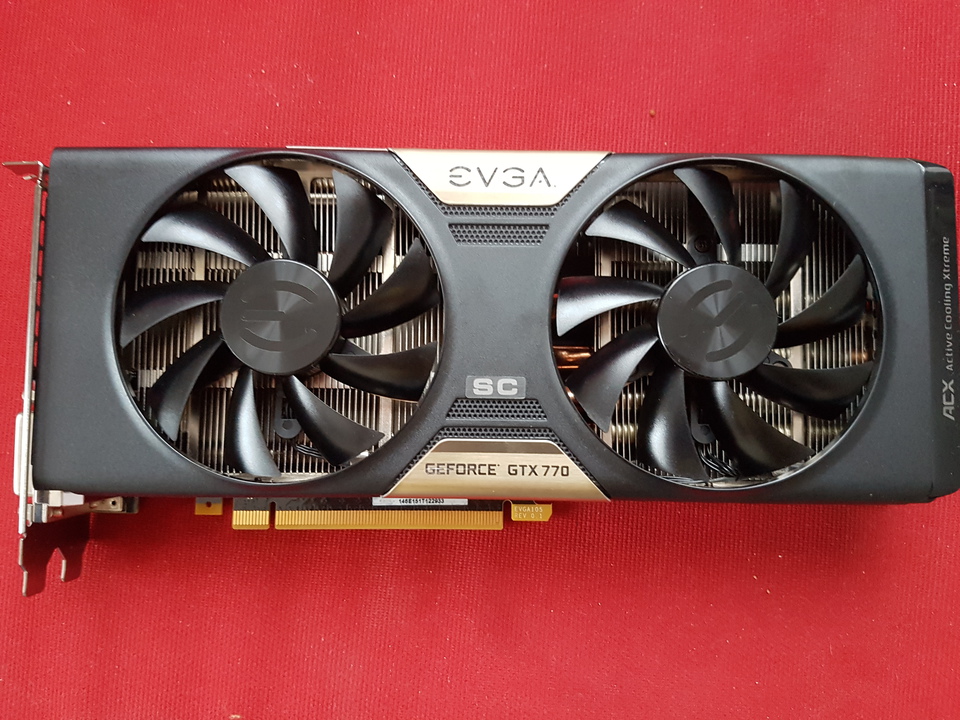 The operating frequency of the core is initially quite high. The base value is 980 MHz. The GTX 660, like the older models of the line, supports GPU Boost auto-overclocking technology, which, depending on a number of parameters, dynamically changes the GPU frequency. In this case, 1033 MHz (Boost Clock) is taken as a certain average value. Let’s take it into account.
The operating frequency of the core is initially quite high. The base value is 980 MHz. The GTX 660, like the older models of the line, supports GPU Boost auto-overclocking technology, which, depending on a number of parameters, dynamically changes the GPU frequency. In this case, 1033 MHz (Boost Clock) is taken as a certain average value. Let’s take it into account.
The video card has a 192-bit memory bus and is equipped with 2 GB of high-speed GDDR5 operating at an effective frequency of 6008 MHz.
Claimed power consumption is 140W. At the same time, the manufacturer focuses on the fact that in real gaming applications that do not require maximum power (non-TDP), the typical power consumption of the GTX 660 is within 115-127 watts. Even in this case, the possibilities of the PCI Express slot will not be limited, because one 6-pin connector is used to supply additional power. The recommended power supply for a system with a GeForce GTX 660 is 450W.
Classic video interface panel contains two DVI connectors (DVI-I and DVI-D), as well as full HDMI and DisplayPort.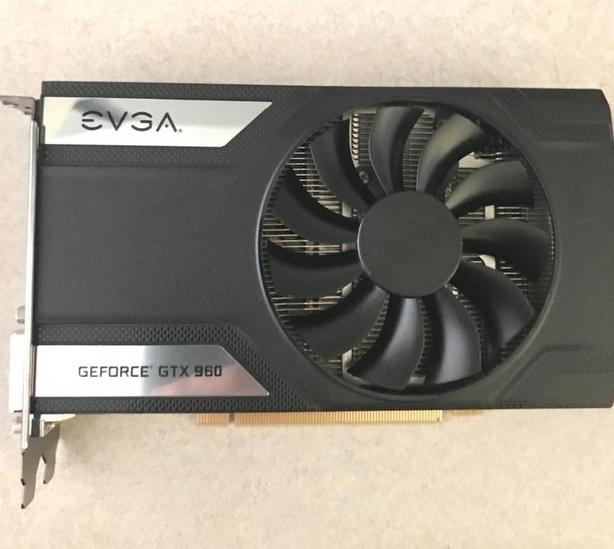 In this regard, the equipment is exactly the same as that of the older Kepler models. PC connection interface — PCI Express 3.0.
In this regard, the equipment is exactly the same as that of the older Kepler models. PC connection interface — PCI Express 3.0.
The reference GeForce GTX 660 looks very similar to the older adapters in the line — GeForce GTX 660 Ti and GTX 670. A compact printed circuit board and a cooling system with an elongated case and a centrifugal fan that blows heated air out of the system unit. In this case, the manufacturers’ imagination is not limited by anything, so we will see a lot of adapters with original PCB design, coolers and modified frequency formulas.
Video card specifications:
| GeForce GTX 660 Ti |
GeForce GTX 660 | GeForce GTX 560 Ti |
GeForce GTX 560 |
Radeon HD 7870 | |
| Crystal name | GK104 | GK106 | GF114 | GF114 | Pitcairn |
| Manufacturing process, nm | 28 | 28 | 40 | 40 | 28 |
| Chip area, mm² | 294 | 221 | 367 | 367 | 212 |
| Number of transistors, billion | 3.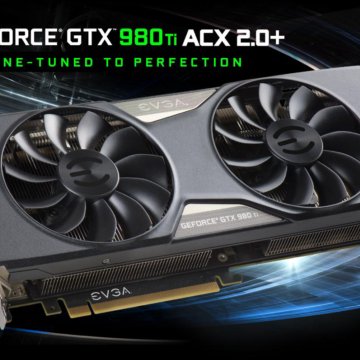 54 54 |
2.54 | 1.95 | 1.95 | 2.8 |
| GPU clock speed, MHz | 915/980 | 980/1033 | 822 | 810 | 1000 |
| Number of stream processors | 1344 | 960 | 384 | 336 | 1280 |
| Number of texture units | 112 | 80 | 64 | 56 | 80 |
| Number of ROPs | 24 | 24 | 32 | 32 | 32 |
| Memory (type, volume), MB | GDDR5, 2048 | GDDR5, 2048 | GDDR5, 1024 | GDDR5, 1024 | GDDR5, 2048 |
| Memory bus bit | 192 | 192 | 256 | 256 | 256 |
| Memory frequency, MHz | 6008 | 6008 | 4008 | 4008 | 4800 |
| Memory bandwidth, GB/s | 144 | 144 | 128 | 128 | 154 |
| Power consumption, W | 150 | 140 | 170 | 150 | 175 |
| MSRP | $300 | $229 | $200-230* | $170-200* | $250 |
* — according to hotline.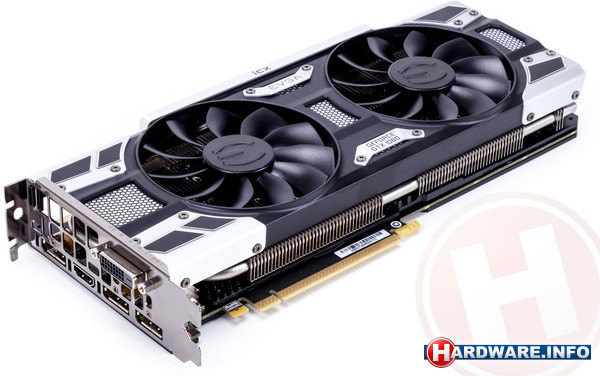 ua catalog
ua catalog
01-10M)
We studied the capabilities of the GeForce GTX 660 on the example of a video card from ZOTAC. Although the reviewed model does not belong to the AMP! accelerated adapter series, the manufacturer initially slightly increased the base clock speed of the GPU — from 980 MHz to 993 MHz.
Video card uses GTX 660 reference PCB. This PCB is quite compact, its length is only 175mm. However, this is not surprising, given that even for the more powerful GeForce GTX 660 Ti and GTX 670, NVIDIA offers printed circuit boards of the same dimensions. In terms of layout, they are still different.
The power subsystem is also built according to a five-phase scheme (4+1), but now the power elements are located at the right edge of the printed circuit board, and in the case of a video card from ZOTAC they are covered with an aluminum radiator. An additional cooler plate is also used for memory chips located on the front side of the PCB.
The video card is cooled using the original cooler that ZOTAC previously used for its GTX 660 Ti adapters. The configuration of CO as a whole is quite familiar. The basis is a cassette with aluminum plates and a pair of 6 mm heat pipes.
The molding of the plates shows an attempt to unify the radiator block — there is a chute for installing a third heat pipe. It is in this configuration that the cooler is used for the GTX 660 Ti. Here, the design is somewhat simplified, which is quite logical, given the reduced thermal package of devices on the GK106. The radiator is blown by a pair of axial fans, the blades of which have a bright orange color. The total length of the video card, taking into account the dimensions of the decorative plate, is 190 mm.
At the very edge on the top panel of the adapter there is a 6-pin connector for connecting additional power. On the opposite side, there is one SLI connector that allows you to combine two video cards in one configuration.
The interface panel is equipped as standard with two DVI, HDMI and DisplayPort, as well as a ventilation grille.
The scope of delivery is not too diverse: a manual, a CD with drivers and software, an adapter from Molex to a six-pin connector and a DVI-VGA adapter.
In progress
Evaluating the efficiency of the cooling system, we note that in general it does a good job. In idle mode on an open stand (~25C), the chip warmed up to 32 degrees. The fan speed in such conditions is 1400–1450 rpm.
Despite the rather high speed, as for this mode, the video card works quietly at rest. Under load, the GPU warmed up to 66 degrees, and Furmark was able to increase the temperature of the chip to 71C. Fan speed increased to 2300–2400 rpm. The noise level in this mode is below average, but no more.
On the presented screenshots, you can evaluate the work of GPU Boost technology. The maximum clock frequency of the chip (GPU Core Clock) during a typical gaming load was 1084 MHz, while during deliberate warming up by a malicious «donut», the core frequency did not rise above the base value — 993 MHz.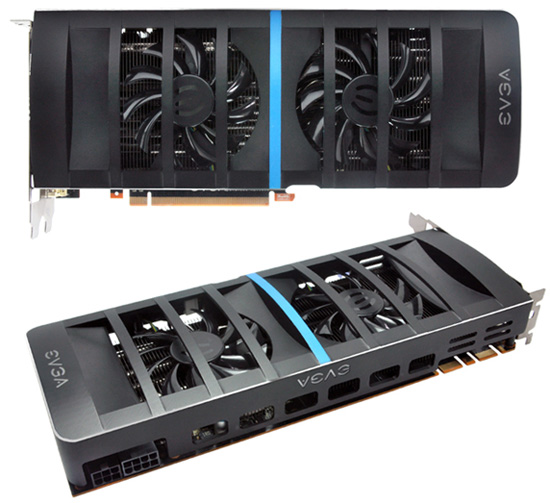
Overclocking
The clock frequency of the GeForce GTX 660 chip is initially quite high. A base value of 980 MHz indicates that during typical gaming, the GPU will automatically accelerate to frequencies in excess of 1 GHz. In the case of a video card from ZOTAC, which has an increased starting frequency up to 993 MHz, the GPU Boost mechanism under load overclocked the chip to 1071-1084 MHz.
Of course, we were interested in evaluating the potential for additional forcing of the video card. Note that in the case of the GeForce GTX 660, the value of the Power Limit parameter is relatively small — 110%. Getting close to him is pretty easy. Therefore, during additional overclocking, you should definitely take into account that GPU Boost works both in one direction and in the other — to decrease (but not lower than the base one). Therefore, it is quite possible that when the maximum clock frequency is set, the performance will not be the highest, because the power consumption of the video card will exceed the allowable limit, as a result of which the dynamic auto-overclocking threshold will be lowered.
Experimentally, it was possible to increase the base frequency of the chip from 993 to 1057 MHz (+4.5%). In this case, during the gaming load, the GPU was running at 1136-1147 MHz. The memory functioned stably on 6676 MHz . Considering the base value, this is approximately +11%.
It’s hard to estimate the frequency potential of the GeForce GTX 660 by a single model. Nevertheless, we can say that the overclocking possibilities in this case are rather limited. The video card initially has high chip/memory frequencies, so there are not many reserves for additional forcing. The rather simple reference power and Power Limit limits of 110% also do not contribute to frequency records.
At the same time, we will probably see models based on the original PCBs with a reinforced element base and more efficient cooling systems. Based on the results of acquaintance with such devices, it will be possible to talk about the capabilities of the GK106 and video cards based on it in general.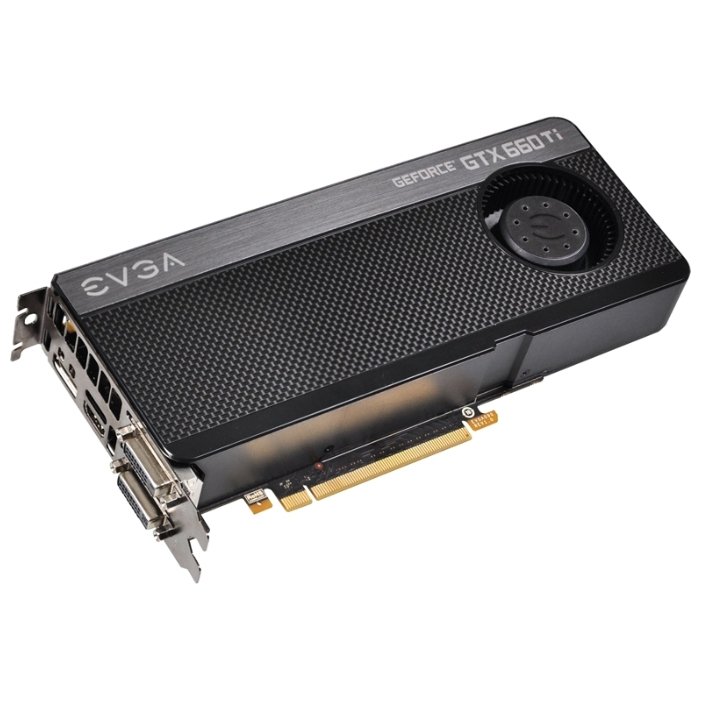
Price
The recommended price for the GeForce GTX 660 for the US market is $229 . For Ukraine, at the start of sales, the price is announced at the level of UAH 2199 (~$270). Traditionally, the real cost of video cards in our retail is much closer to the American one. We hope that nothing will change this time. In this segment, the difference of $40 can radically change the attitude towards the device as a whole. In our estimates, we will still take exactly $229 as a starting point.. However, do not forget that this is the recommended value for reference models. Given the desire of sellers to make money at the start of sales, for video cards with original cooling systems at the initial stage, we can expect prices at the level of $250-260.
Performance
Evaluating the capabilities of the GeForce GTX 660 in the light of those for devices from its direct competitor, we note that the new product generally looks decent against the background of the more expensive Radeon HD 7870 ($250+). The video card on the GK106 confidently outperforms the latter in «synthetics», has a certain advantage in a number of games and is inferior by no more than 10-15% in Metro 2033 and AvP, which are inconvenient for itself. In this case, we are talking about video cards operating in normal modes. After forcing adapters, the situation can seriously change. Perhaps this topic deserves a separate article.
The video card on the GK106 confidently outperforms the latter in «synthetics», has a certain advantage in a number of games and is inferior by no more than 10-15% in Metro 2033 and AvP, which are inconvenient for itself. In this case, we are talking about video cards operating in normal modes. After forcing adapters, the situation can seriously change. Perhaps this topic deserves a separate article.
In normal mode, the GeForce GTX 660 is on average 20-30% more productive than the GeForce GTX 560 Ti. It is unlikely that the owners of the latter get rid of their adapters for the novelty on the GK106. Often this difference can be compensated by overclocking. But when buying a new video card, the novelty certainly looks preferable. Especially if the price difference does not exceed 10-15%. If we compare the performance of the novelty with that of older adapters with the Fermi architecture, then it often turns out to be between the GeForce GTX 570 and GeForce GTX 580. After additional overclocking, the GeForce GTX 660 in some cases even manages to reach the performance of the outgoing flagship.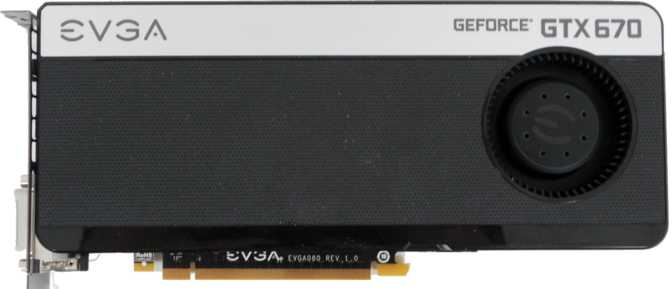
In terms of performance, the new product is consistently inferior to the GeForce GTX 660 Ti by about 15–20%. Given the difference in cost, such a lag is quite natural. The price / performance ratio for both video cards is about the same. In most cases, additional overclocking does not allow the GTX 660 to come close to the older model, but there are exceptions, such as Aliens vs. Predator, in which the novelty, after forcing, could even slightly bypass the GeForce GTX 660 Ti.
In order to talk about the continuity of generations with the facts in hand, we added a GeForce GTX 460 video card equipped with 1 GB (256-bit bus) to the general test. This model is without exaggeration the hit of 2010. The results obtained make it possible to say that all this time the developers of graphic solutions have not been sitting idle. GeForce GTX 660 turned out to be 55-9 more productive than the honored veteran5% (average 70–80%). It is symbolic that at the time of the announcement, the GeForce GTX 460 1GB was also offered at a price of $229.
Totals
NVIDIA has introduced an interesting solution in the most popular segment for enthusiastic gamers. There is no doubt that in quantitative terms video cards costing $100-200 are more mass products. But it is adapters priced at $200-250 that can provide conditions for a comfortable game with high quality settings. Such solutions are the choice of pragmatic users who, on the one hand, are not ready to seriously overpay for having the very best, on the other hand, they are well aware that having saved a little more, it will no longer be possible to get the proper amount of fps during the game. Of course, we would like the base frequency of the chip to be GeForce GTX 660 was lower, and there were more computing units. But that would be too good to be true.
The main competitor managed to adequately respond to the approaching announcement by reducing prices for the Radeon HD 7870/7850. This, of course, will complicate the launch of the GeForce GTX 660.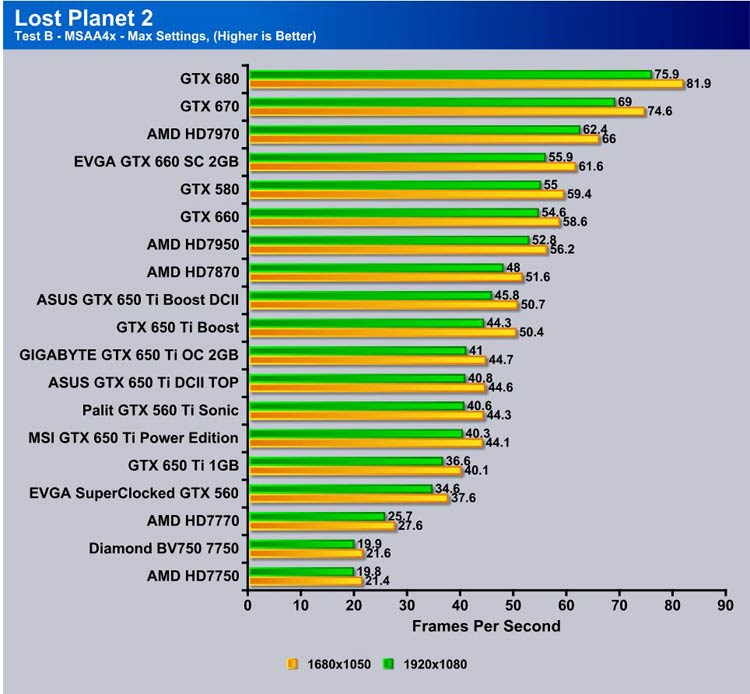 If in the case of top-end devices, after the release they fell into fertile ground — into the hands of frankly longing fans of Californian products, then in the middle segment the GeForce GTX 660 falls into a very competitive environment. And this is great, because as a result we have very attractive solutions from both manufacturers at an affordable price.
If in the case of top-end devices, after the release they fell into fertile ground — into the hands of frankly longing fans of Californian products, then in the middle segment the GeForce GTX 660 falls into a very competitive environment. And this is great, because as a result we have very attractive solutions from both manufacturers at an affordable price.
In the history of acquaintance with the GeForce GTX 660, we still do not put an end to it. We will return to devices on the GK106 repeatedly. First of all, the forced models of other manufacturers are of interest, as well as the direct duel of the novelty with the overclocked video cards Radeon HD 7850/7870. Should be interesting. Don’t switch.
Test device provided by ZOTAC, www.zotac.com
Test bench configuration
| Processor | Intel Core i7-3770K @ 4.5GHz | Intel, www.intel.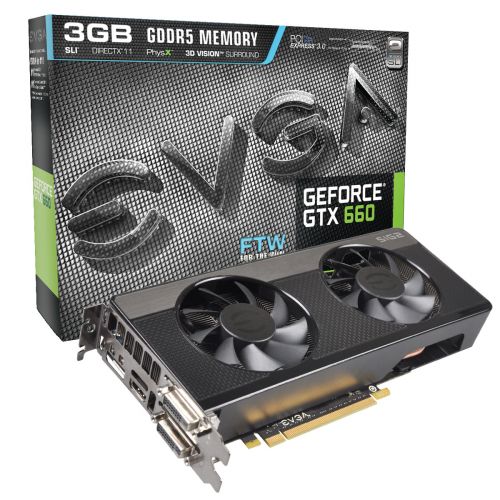
|

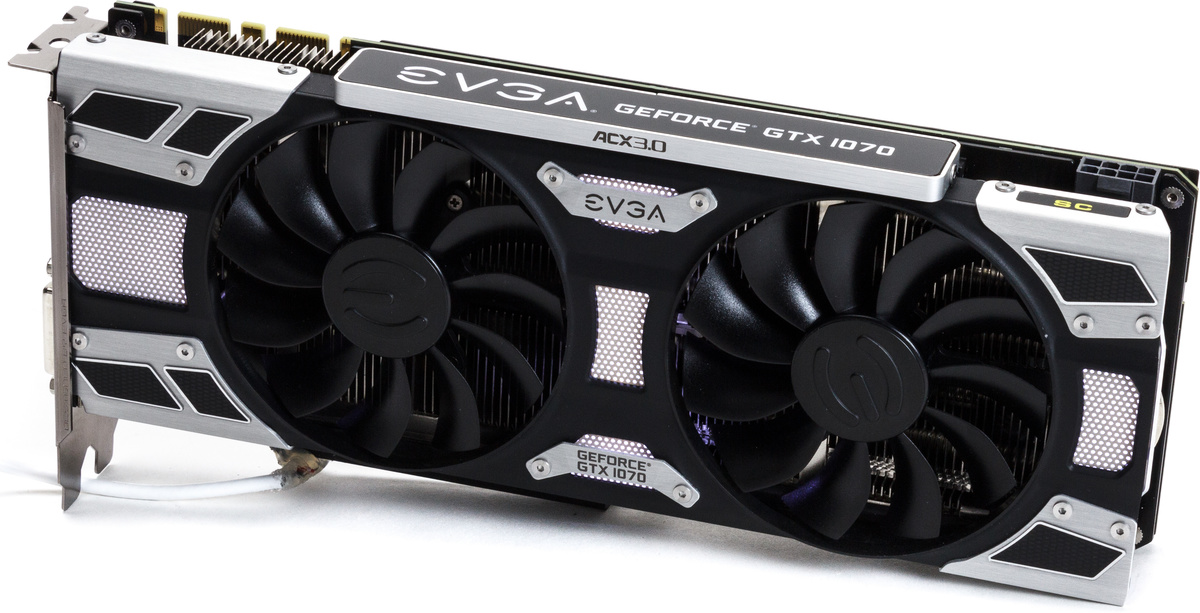 5GB
5GB